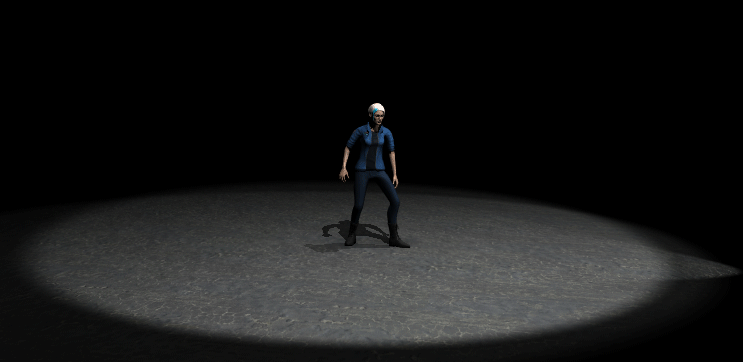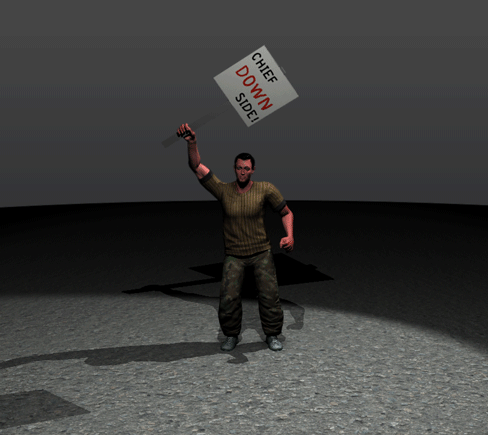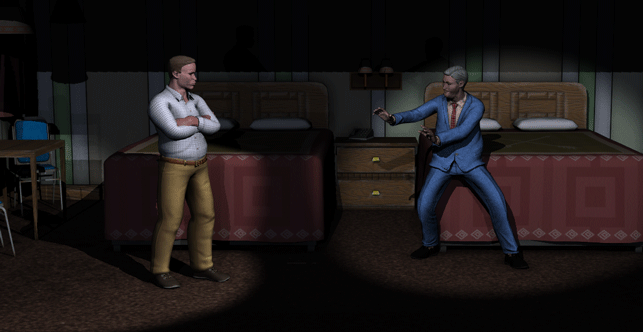
Every animator is familiar with the 12 principles of animation including squash and stretch, anticipation, secondary action, and so on. Knowing how to apply these basics is a good starting point when it comes to animating a full game. But what about something completely different and original? What about a theatrical adventure game like Knee Deep–how do these principles apply to animating characters on a virtual stage?
The fixed perspective of a theater spectator defines Knee Deep clearly: animation must be “blocked out” as if it were being viewed from a virtual stage. Theater talk for working out the position and arrangement of actors on a stage, blocking out a theatrical production is similar to a choreographer charting dance moves.
Distance camera shots are used to evoke the sense of see things in a theater. This results in full body animations almost all the time, which naturally requires a focus on larger movements; in other words, exaggerated motions to convey simple body language expressions. Knee Deep is currently text-only, which puts weight on animation to communicate emotional states.
At right, Robert Woodstep takes a protests with a poster lashing out at Chief Roadside’s Wonderland, the tacky Native American-themed resort at the heart of Cypress Knee. Conveying the dogged persistence of Woodstep meant exaggerating simple movements to ensure that they could be interpreted at range. What seems natural at a distance is more pronounced up-close.
Unlike theater in which a single plot defines the drama, Knee Deep offers an array of narrative options that take the story and characters in different directions. This has an enormous influence on animation, as actors require varied animations depending on player choice.


Ample planning is necessary to make the animation and scene flow as best as possible. It’s crucial that animations can break apart according to player choices and then match the animations back up when the choices funnel back into a straight line.
In the example to the left featuring Jack Bellet and Cypress Knee city councilman Gary Buckingham, an early animation flow test gave an indication of what areas needed attention. The transitions between animations aren’t quite as fluid as they need to be, although, as these wrinkles have already been ironed out ahead release.

